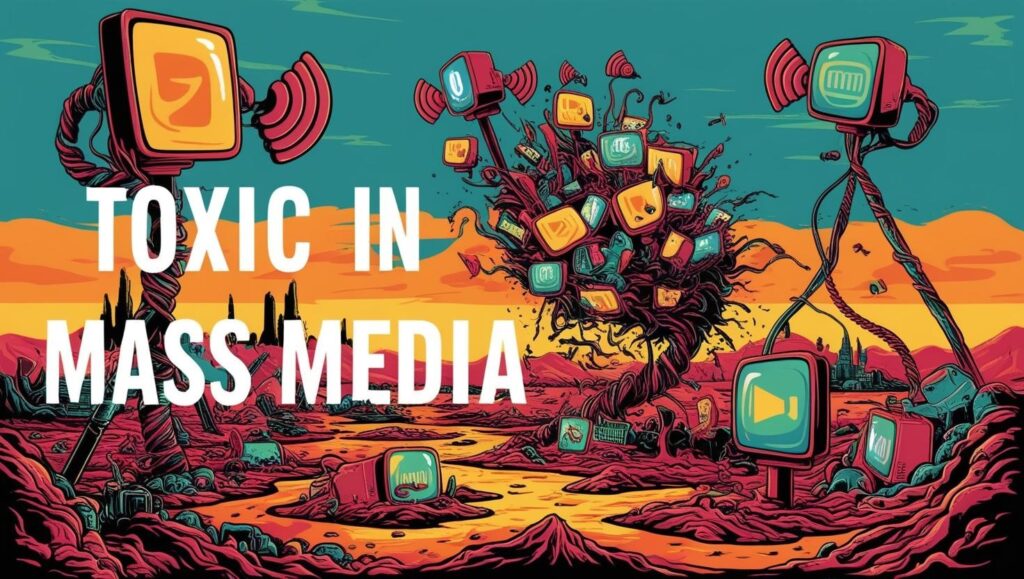In today’s hyper-connected world, sexual imagery is an omnipresent force in mass media. From advertising to social media, film, television, music videos, and digital platforms, hypersexualized content is no longer an occasional element but rather a dominant and strategic tool used to capture attention and drive engagement. While sex appeal has been utilized in marketing for decades, the growing saturation and often exploitative nature of these portrayals have led to serious consequences, affecting societal norms, individual self-esteem, and even relationships. The question we must ask is not whether sexuality belongs in media—it does—but rather whether its current representation is responsible, ethical, and beneficial to society. Unfortunately, the widespread overuse of sexual imagery in mass media fosters unrealistic beauty standards, fuels objectification, distorts perceptions of relationships, and contributes to harmful psychological and social outcomes.
This editorial examines the consequences of the abuse of sexual imagery in mass media, exploring its impact on body image, gender roles, relationships, and society at large. It also highlights the urgent need for media literacy, ethical media representation, and regulatory measures to mitigate its harmful effects.
The media’s emphasis on unattainable beauty standards has long been criticized for its detrimental effects on self-esteem. Studies have consistently shown that exposure to hypersexualized and digitally altered portrayals of men and women in advertising, film, and social media leads to body dissatisfaction, particularly among young people.
A 2022 study published in Body Image found that young women who regularly engage with sexualized media content report significantly higher levels of body dissatisfaction and anxiety compared to those who do not. The study also highlights that these unrealistic portrayals lead to self-objectification, where individuals begin to evaluate themselves based on external appearance rather than internal qualities such as intelligence, kindness, or personality. Similarly, a study by Perloff (2022) suggests that the impact of hypersexualized imagery on social media platforms such as Instagram and TikTok exacerbates mental health issues, including depression and eating disorders. The impact is not limited to women. Men, too, are subjected to hyper-masculinized portrayals that emphasize muscularity, dominance, and sexual aggression. The rise of “bigorexia” or muscle dysmorphia among men has been linked to the unrealistic depictions of male bodies in fitness and entertainment media. These portrayals pressure men to attain an extreme level of muscularity, leading to unhealthy behaviors such as steroid use, excessive exercise, and anxiety over body image.
Sexual imagery in mass media has played a major role in normalizing the objectification of individuals, particularly women. Whether it is in advertisements that depict women as passive objects of male desire or music videos that equate femininity with sexual availability, the media often reduces women’s worth to their physical attributes. The Journal of Media Psychology published a study in 2023 showing that repeated exposure to objectifying media content contributes to the internalization of harmful gender norms, reinforcing the belief that women’s primary value lies in their physical appeal. This, in turn, affects self-perception, career aspirations, and self-confidence. Women who see themselves as objects of attraction rather than as autonomous individuals are less likely to pursue leadership positions, speak up in academic and professional environments, or set personal goals beyond aesthetic appeal. The objectification of men, though less discussed, is also present. Men are frequently portrayed as hyper-masculine figures, expected to exude dominance, wealth, and an insatiable sexual drive. These stereotypes reinforce rigid gender norms, making it difficult for men to express vulnerability, emotional depth, or personal struggles.
Perhaps the most vulnerable demographic affected by the abuse of sexual imagery in mass media is adolescents. The average child is exposed to explicit content at an increasingly younger age due to the accessibility of smartphones and social media. According to research by the American Academy of Pediatrics (2023), early exposure to hypersexualized media content is linked to risky sexual behavior, distorted perceptions of relationships, and an increased likelihood of engaging in non-consensual activities. Furthermore, young people are consuming media as their primary source of sex education. Without proper guidance, they are at risk of adopting the unrealistic and often harmful sexual scripts portrayed in mass media. This highlights the urgent need for comprehensive sex education that includes discussions on consent, emotional connection, and healthy relationships.
The abuse of sexual imagery in mass media is a pressing societal issue with wide-ranging consequences. From body image disorders to distorted relationships and gender inequality, the unchecked exploitation of sexuality in media has significant psychological and social repercussions. As media consumption continues to rise, the need for responsible representation and ethical storytelling has never been more critical. It is time to shift the narrative away from sensationalism and towards content that empowers individuals rather than diminishing them. Media creators, educators, policymakers, and consumers all have a role to play in shaping a future where media reflects reality in a way that promotes self-worth, respect, and genuine human connection.
